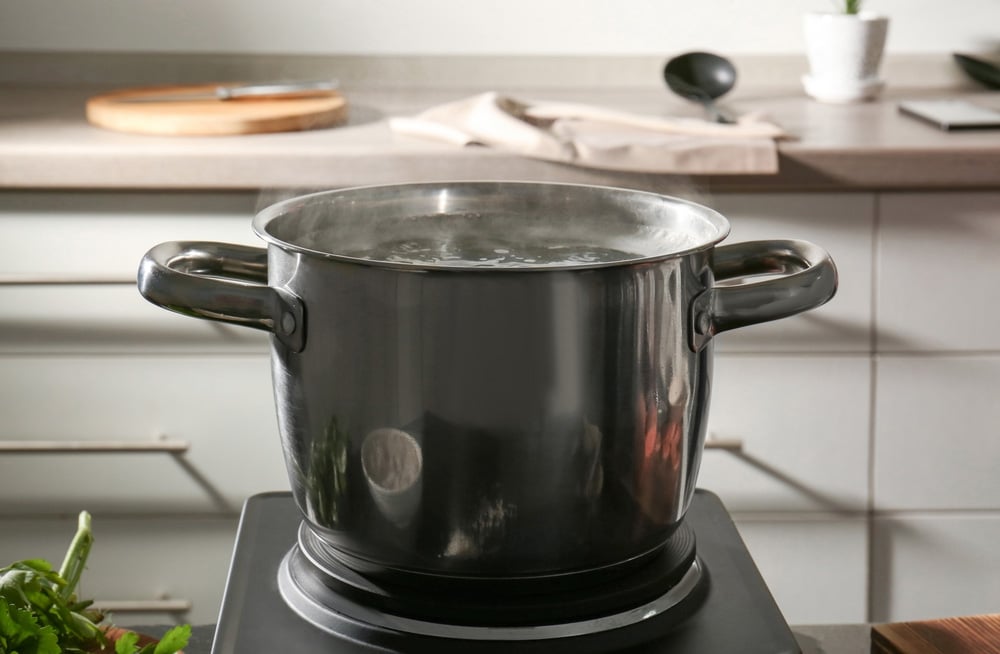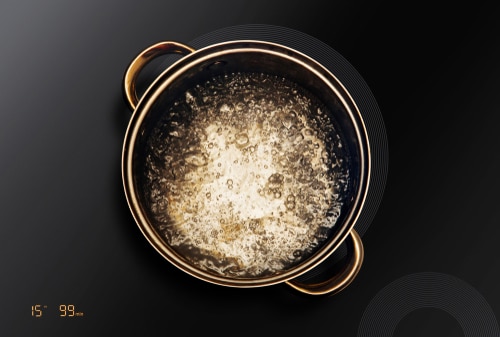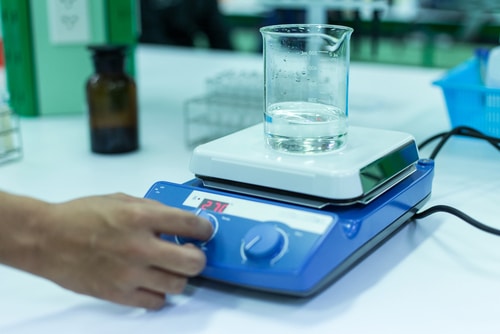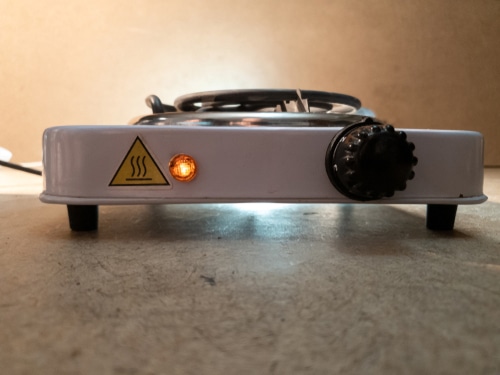
Almost every kitchen has a hot plate these days and it’s an appliance that adds a considerable amount of convenience to our lives. Aside from cooking, a hot plate can also be used for heating and reheating food.
With that said, a common question people often ask is, “Can a hot plate boil water?” Keep reading as we have the answer you’re looking for!
Can a Hot Plate Boil Water?
The short answer is—yes you can boil water on a hot plate! All that’s needed is a hot plate and the right type of pot or pan and you’re all set.
There are, however, a few details that you should be careful about if you’re planning on boiling water using your hotplate. Let’s take a look at how you should go about it.
How to Boil Hot Water on a Hot Plate?
Boiling hot water on your hot plate is easier than you think. For starters, safely boiling water on your hot plate involves choosing the right pot or pan for the job. When choosing the right pot, always consider the following tips:
- Plastic will melt, no matter how low you set the hot plate, so avoid any plastic containers
- Glass may crack, depending on the temperature and type of glass so glass containers should also not be used
- Rather opt for a non-stick pan or pot that won’t stick to the surface of your hot plate
- Use a pot that can easily handle the amount of water you need to boil—so, if you need to boil one liter of water, you’ll want a pot of about 1,5-liter capacity—to ensure the water doesn’t spill over when it heats up
- Always use a pot with a lid to prevent water escaping as steam
- Avoid using pots or pans with plastic handles that may melt if exposed to the direct heat of the hot plate
- Ensure that the hotplate is placed on a safe surface so excessive heat won’t damage the countertop
- On average, it will take about 5 to 10 minutes on a medium to high heat setting to adequately boil the water, so plan your preparations accordingly
- If you’re using a hot plate that doesn’t have a temperature control setting, just place the pot on the plate and wait for it to boil
Is Boiling Water on Your Hot Plate Safe?
You may be wondering if boiling water on your hot plate is safe. Fortunately, if you follow the correct safety procedures, there is no reason why you can’t successfully boil water on your hot plate without any risk to anyone nearby.
A few safety considerations to keep in mind include:
- Keep an eye on the pot, as overfilling can lead to water spilling which can cause burns to the person working with the hot plate or even damage to the hot plate
- Use a cloth to touch the handle of the pot, irrespective of what the handle is made of
- Ensure the hot plate is moved as far away from the electrical outlet as possible to avoid electrocution
- Turn the hot plate off before removing the pot
- If you’re pouring the water from the pot to another container such as a cup, teapot or smaller container, be sure to only do this once you have moved the pot from the hotplate—that will prevent any accidental spills on the hotplate
Hotplate Hazards to Look Out For
Hotplates are very useful, especially if you don’t have a stovetop or you have limited space in your kitchen area. Some hazards go hand in hand with using hotplates.
Whether you’re using your hotplate to heat water or to cook, keep these potential hazards in mind and make plans to avoid them if possible:
- Burn hazards: Touching a hot plate’s surface can cause severe burns. Depending on the type of hot plate you have, it might be equally dangerous to touch the sides, so ensure that no one touches any part of the hot plate while it’s in use.
- Fire hazard: Hot plates are popular appliances in college rooms and flats. In these small spaces, hot plates are often placed in areas where they’re close to other appliances or even materials that could catch fire if exposed to the heat from the hot plate. Always be mindful of where you place your hot plate and what items are around it when it’s on.
- Storage: If you store your hotplate in a cupboard or drawer, be sure to keep it away from potentially flammable or combustible materials.
- Correct usage: When using your hot plate, always ensure that you use it correctly and only what it’s intended for. For instance, use the correct settings for each type of cooking, heating or reheating that you do on it. Invest in the right type of pots to cook and boil liquids. Depending on how much cooking you do on your hot plate, two pots and a pan may be sufficient. Opt for pots with lids to minimize spills onto the plate and cooking area.
- Proper supervision: Never leave the hot plate unattended. A spill or spark can easily be a fire hazard if not caught in time. So, if you’re boiling or cooking something on the plate, be sure to remain in the same room.
- Let it cool down: If you are done with your hot plate, it’s important to let it cool down completely before packing it away. Once you switch it off, be sure to unplug it from the outlet and leave it on the counter or table to cool down.
- Routinely check for damages: If your hot plate is shoved in between other items in a cupboard or drawer, it’s important to routinely check it for damages. This is because cords can easily become worn, frayed or damaged if they are scrunched up in a cupboard. This in turn can lead to spark or fire hazards. It’s also necessary to check the heat sensors to make sure it isn’t corroded or worn out.
- Keep it clean: If you’re cooking a whole meal on your hot plate, it’s easy for the plate to become dirty as a result of food spills. If left uncleaned, your hot plate may become damaged and could pose a potential fire risk as the old food continues to burn on the plate. Once your hot plate has cooled down after use, give it a good wipe down with a warm, damp cloth before storing.
- Cooking liquids: If you’re going to fry food on your hot plate, consider swapping cooking liquids such as grease, oil, or shortening for a small quantity of non-stick cooking spray—this will minimize the risk of spills and oily messes.
Conclusion
Hot plates are very diverse. You can use them for a host of cooking functions around the kitchen, and that includes boiling water. With that said, there are several considerations to keep in mind when using your hot plate.
Be sure to follow our recommendations and you’ll easily be able to use your hot plate for boiling water when it’s needed!


